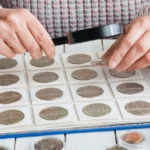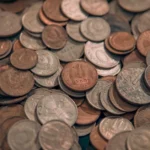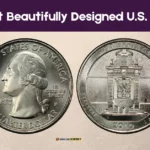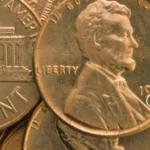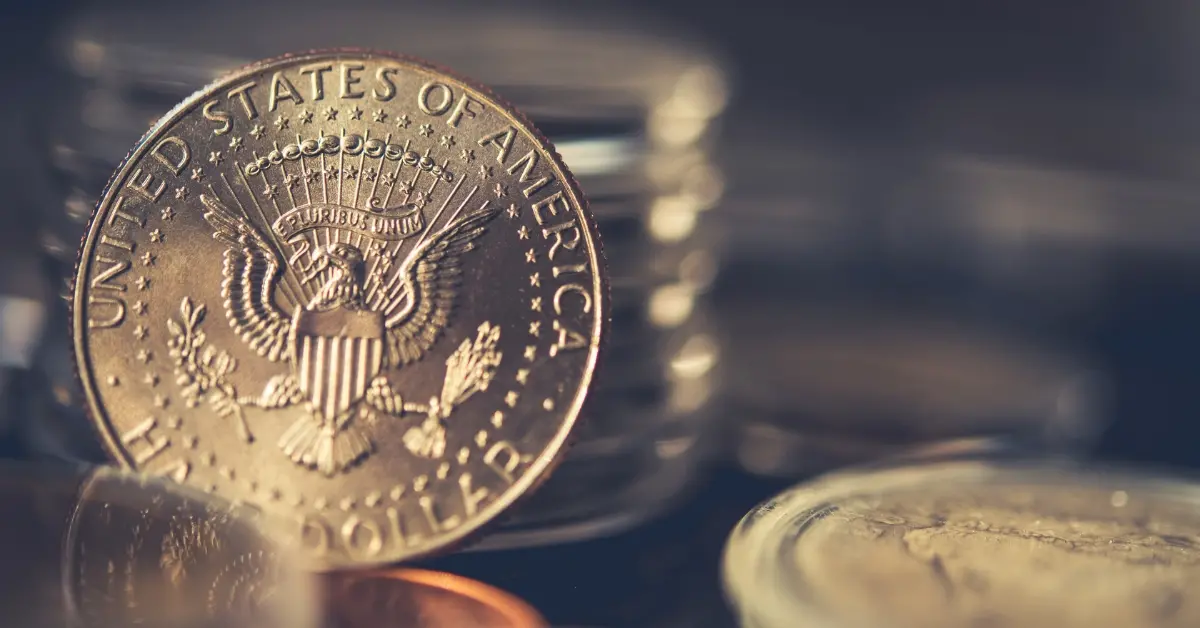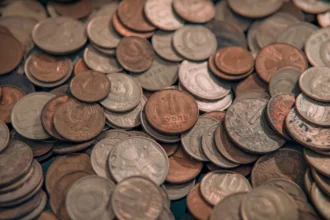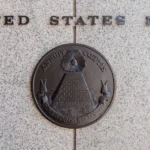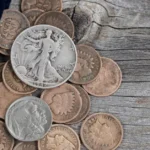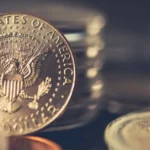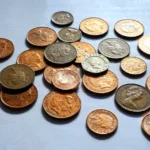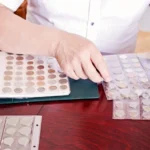Introduction
One of the most critical factors determining an MS70 coin’s value and desirability is its condition. This is where coin grading plays a pivotal role, providing collectors and investors with a standardized way to evaluate a coin’s quality.
Among the many grading systems, the Sheldon Coin Grading Scale stands out as the most widely accepted and used globally. Ranging from Poor-1 to Mint State-70 (MS-70), this scale helps collectors understand a coin’s level of preservation. At the pinnacle of this scale is MS-70, a designation reserved for coins that exhibit absolute perfection—free from any blemishes, flaws, or wear.
But what exactly makes a coin MS-70? Why is this grade so revered, and how can collectors identify and acquire such specimens? In this article, we will dive deep into the world of coin grading, unravel the mysteries behind MS-70 coins, and explore their significance in the numismatic community. Whether you’re a seasoned collector or a curious beginner, this guide will illuminate the path to understanding and appreciating the allure of flawless coins.
What is the MS-70 Grade?
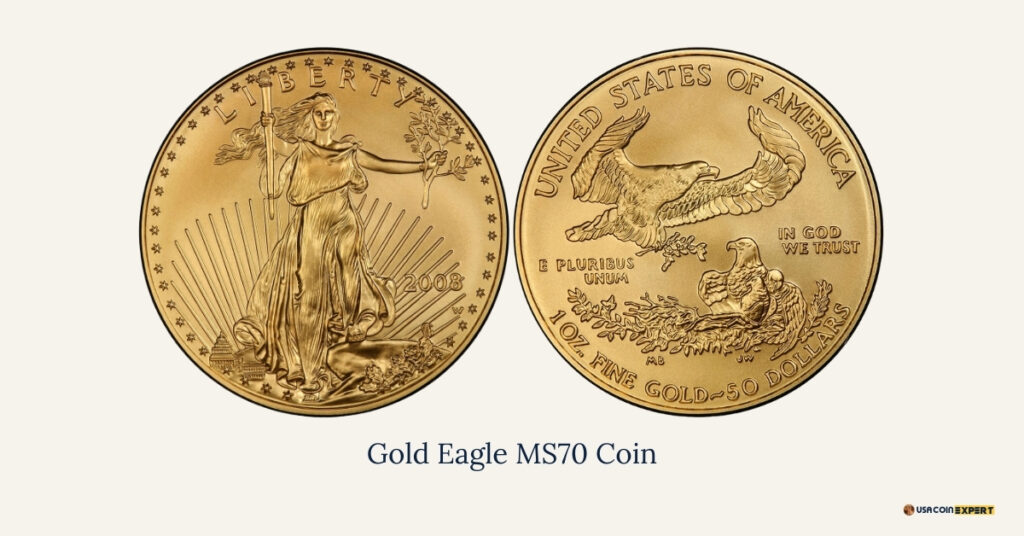
The MS-70 grade represents the ultimate standard of perfection in the world of coin grading, as defined by the Sheldon Coin Grading Scale. Coins graded as MS-70 are deemed flawless, exhibiting no post-production imperfections of any kind under 5x magnification. This grade signifies a combination of pristine condition, exceptional craftsmanship, and outstanding visual appeal, making it the highest accolade a coin can achieve.
Breaking Down MS-70
- MS (Mint State): This indicates that the coin is uncirculated, meaning it has never been used in everyday transactions. Mint State coins are struck and released by mints specifically for collectors or as part of regular production but are preserved in their original condition.
- 70: The numerical designation reflects the coin’s place on the Sheldon Scale, with 70 being the highest possible grade. A score of 70 implies absolute perfection.
Key Characteristics of an MS-70 Coin
- Flawless Surface:
- No scratches, nicks, or blemishes visible to the naked eye or under magnification.
- The coin must have been handled and stored with extreme care to prevent any damage.
- Perfect Mint Luster:
- A vibrant, original sheen produced during the minting process.
- No dulling or discoloration that could detract from the coin’s brilliance.
- Sharp and Complete Strike:
- The design elements of the coin must be fully detailed, with no weak or blurry areas.
- Every part of the coin’s design, from text to intricate patterns, must be perfectly rendered.
- No Signs of Wear:
- Coins graded MS-70 show no evidence of handling, circulation, or age-related deterioration.
- Even microscopic wear disqualifies a coin from this grade.
- Exceptional Eye Appeal:
- The coin must possess an aesthetically pleasing appearance, free from any distracting elements such as uneven toning or spotting.
Why is MS-70 Rare?
Achieving a grade of MS-70 is exceptionally challenging, even for modern coins:
- Small flaws can occur during the minting process, including minor scratches from machinery or uneven strikes.
- Handling during packaging and distribution can lead to imperfections before the coin reaches collectors.
- Even coins straight from the mint may fall short of this standard due to minute inconsistencies.
The Significance of MS-70 in Numismatics
- Rarity: MS-70 coins, especially for older issues, are exceedingly rare. Even modern coins minted in large quantities may only produce a small percentage of MS-70 specimens.
- Value: Coins graded as MS-70 often carry a premium due to their flawless condition, making them highly desirable among collectors and investors.
- Symbol of Excellence: An MS-70 grade reflects the pinnacle of minting craftsmanship and preservation, embodying the ideal that numismatists strive to attain.
In the world of coin collecting, MS-70 is more than just a number—it is a symbol of perfection, artistry, and dedication to preserving history in its purest form. Whether for personal enjoyment or investment, owning an MS-70 coin is a testament to one’s passion for numismatics.
The Sheldon Coin Grading Scale: A Universal Standard in Coin Collecting

The Sheldon Coin Grading Scale is the most widely accepted system for evaluating the condition and quality of coins. Originally developed in 1949 by Dr. William Herbert Sheldon, the scale was created to provide a consistent and objective framework for assessing a coin’s state of preservation. Over time, it has evolved to become the industry standard for coin grading, used by collectors, dealers, and professional grading services alike.
History of the Sheldon Scale
- Origins: Dr. Sheldon initially devised the scale to grade large cents from 1793 to 1814. The purpose was to link a coin’s grade with its market value.
- Modern Adoption: Today, the Sheldon Scale is used to grade coins from all periods and regions, thanks to its adaptability and precision.
How the Scale Works
The Sheldon Scale ranges from Poor-1 (P-1) to Mint State-70 (MS-70), with each grade representing a specific level of preservation and detail. It provides a numerical system where higher numbers indicate better condition:
- Grades 1–59: Circulated Coins
- Poor (P-1): Barely identifiable, heavily worn.
- Fair (FR-2): Identifiable but extremely worn.
- Good (G-4 to G-6): Basic design visible, heavily worn.
- Very Good (VG-8 to VG-10): Major details worn, minor elements visible.
- Fine (F-12 to F-15): Moderate wear, some detail remaining.
- Very Fine (VF-20 to VF-35): Light wear, design elements clear.
- Extremely Fine (EF/XF-40 to EF/XF-45): Slight wear, nearly all details sharp.
- About Uncirculated (AU-50 to AU-58): Minor signs of wear on the highest points, strong luster.
- Grades 60–70: Uncirculated Coins
- Mint State (MS-60 to MS-70): These coins show no signs of circulation and range from average quality to absolute perfection.
- MS-60: Uncirculated with numerous minor imperfections.
- MS-63: Slightly better quality with fewer marks.
- MS-65: Gem-quality coin with sharp detail and excellent eye appeal.
- MS-70: Perfect coin with no visible imperfections, even under magnification.
Special Grades
- Proof Coins (PR): Specially struck coins with a high level of detail and a mirror-like finish. Proofs are graded separately but also use the Sheldon Scale.
- Details Grade: Coins with significant flaws, such as cleaning or damage, may not receive a numerical grade but instead a designation explaining the issue.
Why the Sheldon Scale is Important
- Standardization: Provides a universal language for grading, ensuring consistency across the numismatic community.
- Transparency: Enables collectors and investors to make informed decisions based on a coin’s condition.
- Value Determination: The grade directly influences a coin’s market value, making it a critical factor for pricing.
- Trust: Professional grading services use the Sheldon Scale to certify coins, building confidence in their authenticity and condition.
Limitations of the Sheldon Scale
- Subjectivity: While the scale is standardized, grading can sometimes vary slightly between graders or organizations.
- Magnification Differences: Some graders may use different levels of magnification, impacting the perception of flaws.
- Market Variability: A coin’s value may not always align perfectly with its grade due to factors like rarity or demand.
How the Sheldon Scale is Applied Today
Professional organizations like the Professional Coin Grading Service (PCGS) and Numismatic Guaranty Company (NGC) rely on the Sheldon Scale for their evaluations. These organizations combine expert graders and cutting-edge technology to ensure accurate assessments, sealing graded coins in protective slabs for preservation and authenticity.
The Sheldon Coin Grading Scale is the backbone of modern numismatics, offering clarity and confidence in the art and science of coin collecting. Understanding this scale is essential for anyone looking to delve into the fascinating world of rare and historic coins.
Characteristics of an MS-70 Coin: What Makes It Perfect?
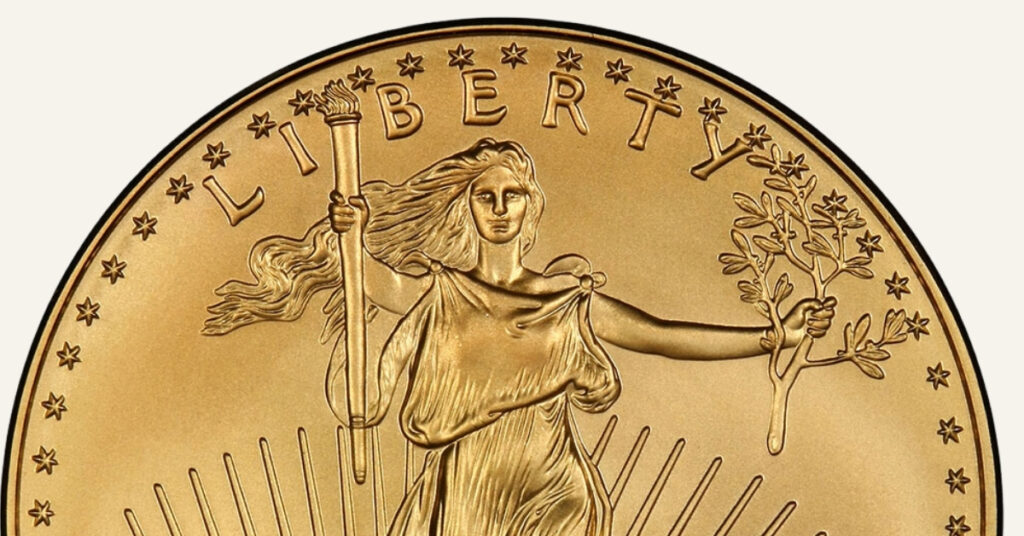
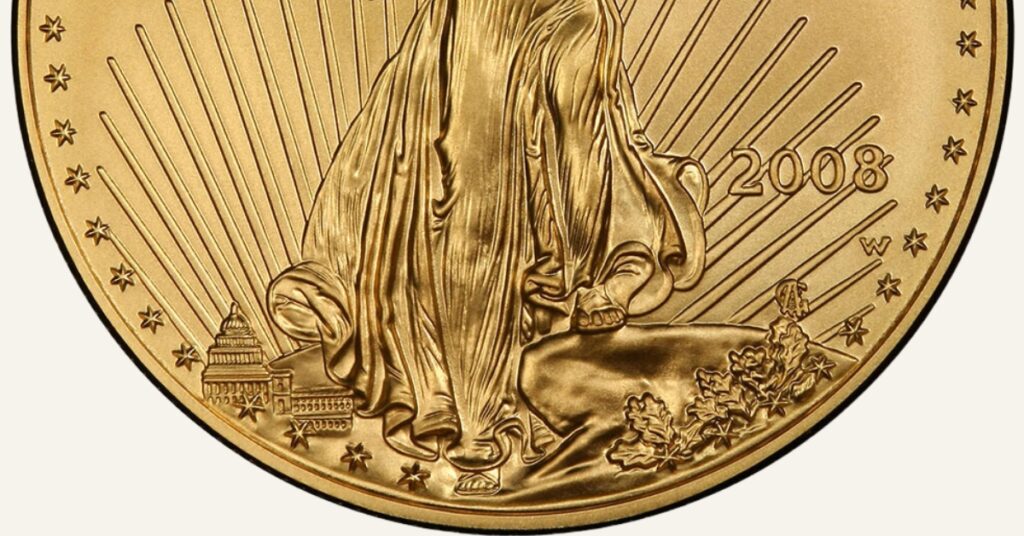
The MS-70 grade is the highest and most coveted rating on the Sheldon Coin Grading Scale, signifying a coin of absolute perfection. Achieving this grade is exceedingly rare, even for modern coins, as the standards for MS-70 are exceptionally stringent. Coins graded as MS-70 are considered flawless in every aspect, making them the gold standard for collectors and investors alike.
1. Flawless Surface
- Definition: The coin must have no visible imperfections, even under 5x magnification.
- Examples of Flaws to Avoid:
- Scratches
- Nicks
- Hairlines or scuff marks
- Post-mint handling marks
- Impact: A flawless surface ensures the coin’s original mint appearance is preserved, making it pristine and highly desirable.
2. Perfect Mint Luster
- Definition: Mint luster refers to the natural sheen or brilliance created during the minting process. An MS-70 coin retains its full, original luster.
- Key Features:
- Uniform shine across the entire surface.
- No signs of dulling, fading, or discoloration.
- Why It Matters: Mint luster enhances a coin’s visual appeal, contributing to its perception as a perfect specimen.
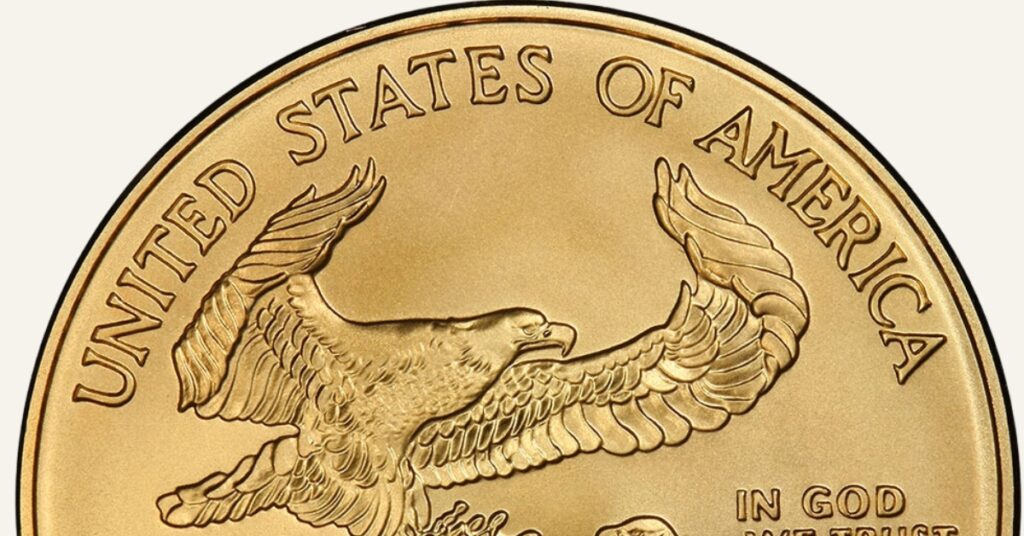
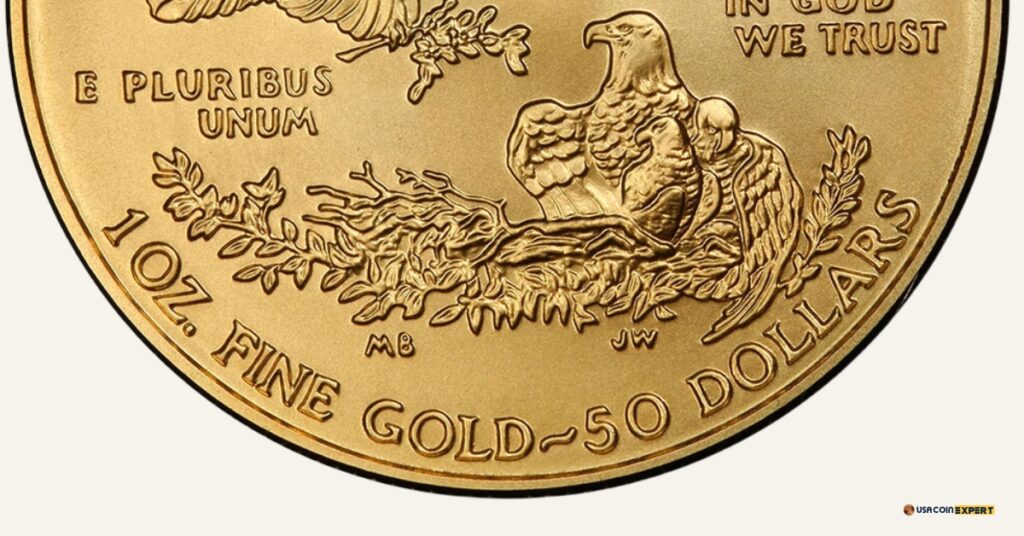
3. Sharp and Complete Strike
- Definition: A coin’s strike refers to how well the design elements are impressed onto the metal during the minting process.
- Characteristics of a Sharp Strike:
- Every detail, from intricate patterns to text, is fully defined and sharp.
- No areas of weakness, flatness, or missing elements.
- Why It’s Critical: A complete strike showcases the craftsmanship of the mint and ensures the design is displayed in its intended glory.
4. No Signs of Wear
- Definition: MS-70 coins are uncirculated, meaning they show no evidence of handling, circulation, or age-related deterioration.
- What to Look For:
- Edges and high points must be free from any flattening or softening.
- The coin should appear as if it has just been minted.
- Significance: Any sign of wear, no matter how minor, automatically disqualifies a coin from being graded MS-70.
5. Exceptional Eye Appeal
- Definition: Eye appeal is a subjective but vital factor that refers to the coin’s overall attractiveness.
- Key Features:
- Aesthetic harmony between luster, strike, and design.
- No distracting toning, spotting, or discoloration.
- Why It Matters: Exceptional eye appeal elevates a coin beyond technical perfection, making it a standout piece in any collection.
6. Certified Authenticity
- Definition: MS-70 coins are graded and certified by professional organizations such as PCGS (Professional Coin Grading Service) or NGC (Numismatic Guaranty Company).
- Features of Certification:
- Encased in a protective slab with a label confirming the grade.
- Security measures to prevent tampering or counterfeiting.
- Why It’s Important: Certification guarantees the coin’s authenticity, grade, and preservation.
7. Free from Minting Flaws
- Definition: Minting flaws are imperfections caused during production, such as die cracks or planchet defects.
- MS-70 Standards:
- No minting defects, no matter how minor.
- Perfect symmetry and alignment of the design elements.
- Relevance: Even minor production errors can detract from a coin’s perfection, making this criterion essential for MS-70.
Why MS-70 Coins Are Rare
- The minting process, though highly controlled, is not immune to small inconsistencies. Even modern coins released in large quantities may have only a small fraction meeting the MS-70 standard.
- Factors like handling during packaging or slight imperfections in striking can prevent a coin from achieving this grade.
Why Collectors Covet MS-70 Coins
- Prestige: Owning an MS-70 coin represents the pinnacle of collecting.
- Value: These coins often command premium prices due to their rarity and perfection.
- Aesthetic Appeal: The flawless beauty of MS-70 coins makes them a centerpiece in any collection.
How Coins Are Graded: The Process Behind the Numbers
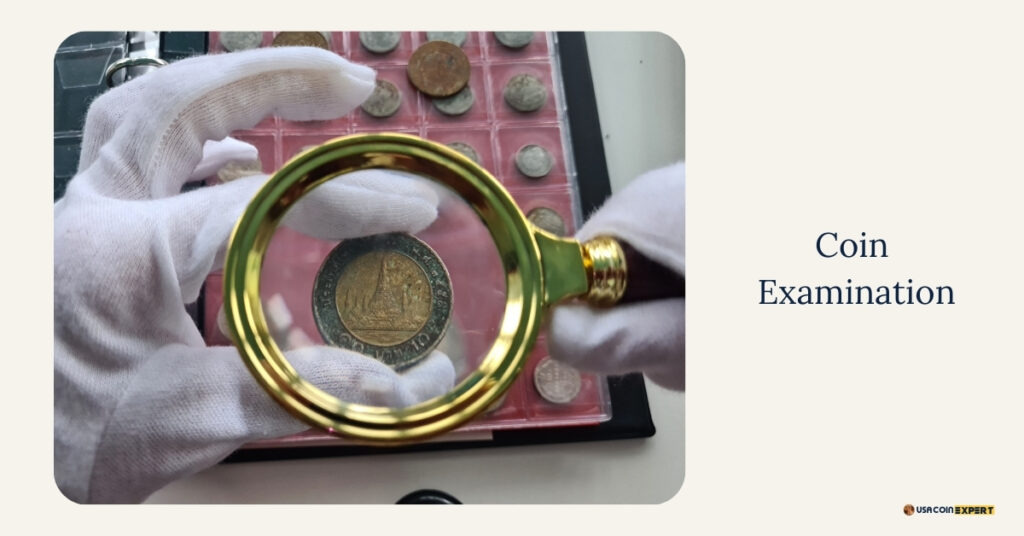
Coin grading is a meticulous process used to assess a coin’s condition, quality, and overall appeal. It plays a critical role in numismatics, as a coin’s grade directly influences its value and desirability. Professional coin grading organizations follow a detailed methodology to ensure consistency and accuracy.
Here’s a breakdown of how coins are graded:
1. The Grading Process: Step-by-Step
Step 1: Initial Examination
- Visual Inspection: A grader examines the coin under proper lighting to evaluate its surface, luster, and overall appearance.
- Magnification: A magnifying tool (often 5x) is used to identify small imperfections that are not visible to the naked eye.
- Category Assignment: The coin is classified as either circulated or uncirculated, based on signs of wear.
Step 2: Evaluating Key Characteristics
- Surface Preservation: Scratches, nicks, and other flaws are noted, as they affect the coin’s grade.
- Strike Quality: The sharpness and detail of the design are examined to assess the quality of the minting process.
- Luster: The coin’s shine, or mint brilliance, is inspected to determine its originality and uniformity.
- Eye Appeal: The overall aesthetic and balance of the coin are subjectively judged for visual harmony.
Step 3: Assigning a Grade
- Graders assign a numerical grade based on the Sheldon Coin Grading Scale (1 to 70).
- Multiple graders may evaluate the same coin independently to ensure accuracy.
- If grades differ slightly, the coin is re-examined, and a consensus is reached.
Step 4: Certification and Sealing
- The coin is encapsulated in a protective holder (slab) to preserve its condition.
- A label is affixed, detailing the grade, certification number, and any additional designations (e.g., “Proof” or “Deep Cameo”).
- Security features are added to prevent tampering or counterfeiting.
2. Key Factors Considered in Grading
Surface Condition
- Coins are inspected for any marks, scratches, or damage. Fewer imperfections result in a higher grade.
- Example: An MS-70 coin is flawless, while an MS-65 may have minor marks.
Strike Quality
- The detail and sharpness of the coin’s design are assessed. Coins with weak or uneven strikes may receive a lower grade.
Mint Luster
- Coins with strong, original luster are graded higher, while dull or faded coins are penalized.
Wear
- Circulated coins are graded based on the amount and location of wear. Uncirculated coins (Mint State) show no wear.
Eye Appeal
- Subjective but important, this considers the overall attractiveness of the coin. Coins with exceptional toning or brilliance may receive bonus points.
3. Tools and Techniques Used
- Lighting: Graders use specialized lighting to highlight surface details and luster.
- Magnification: A 5x magnifying glass is standard, but higher magnification may be used for detailed inspections.
- Digital Imaging: Advanced grading services use high-resolution imaging to detect flaws invisible to the naked eye.
- Grading Standards: Organizations like PCGS and NGC maintain detailed guidelines to ensure consistency.
4. The Role of Professional Grading Services
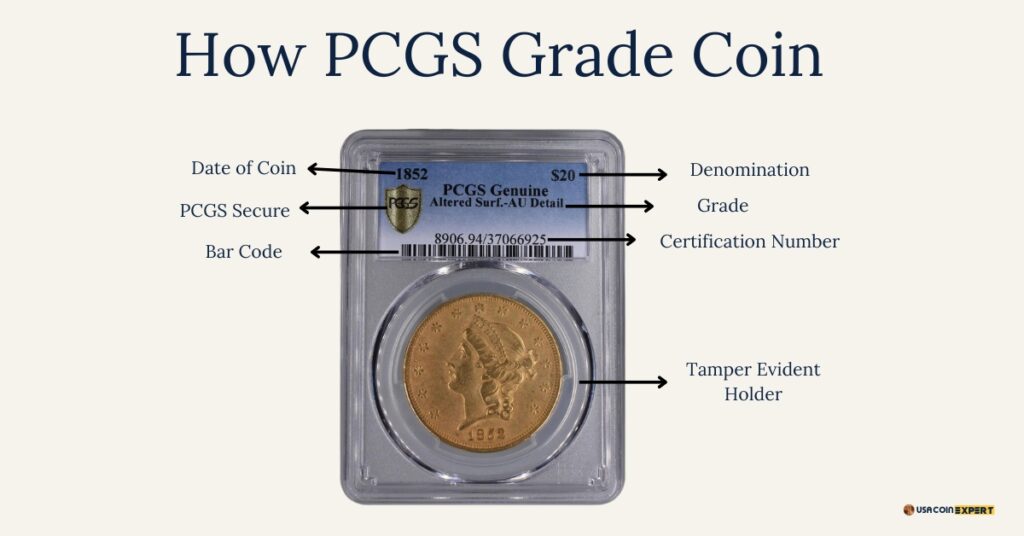
Major Grading Organizations
- PCGS (Professional Coin Grading Service): Known for its strict grading standards and global reputation.
- NGC (Numismatic Guaranty Company): A trusted name in coin certification with advanced grading techniques.
- ANACS and ICG: Other reputable grading services.
Benefits of Professional Grading
- Standardization: Ensures consistent and objective grading.
- Authentication: Verifies the coin’s authenticity and condition.
- Preservation: Encapsulation protects the coin from damage.
- Market Confidence: Certified coins are easier to sell and often fetch higher prices.
5. Challenges and Subjectivity in Grading
- Minor Variations: Grading involves some subjectivity, as different graders may perceive small flaws differently.
- Magnification Levels: The use of different tools and techniques can lead to slight discrepancies.
- Evolving Standards: As technology improves, grading practices may become more precise, affecting older assessments.
6. Additional Grading Designations
Grading services often assign special designations to coins, such as:
- Proof (PR): Coins with a mirror-like finish struck for collectors.
- Deep Cameo (DCAM): Proof coins with a frosted design and a deeply reflective background.
- Full Bands (FB) or Full Steps (FS): Coins with specific features fully struck.
7. Tips for Collectors
- Choose Certified Coins: Buy coins graded by reputable services for assurance of quality and authenticity.
- Learn to Grade: Educate yourself about grading standards to evaluate coins independently.
- Inspect Carefully: Use proper lighting and magnification when assessing coins.
Grading coins is both an art and a science, requiring skill, experience, and attention to detail. Professional grading services play a vital role in maintaining trust and standardization in the numismatic market, ensuring collectors and investors have confidence in their acquisitions.
Challenges in Achieving MS-70: Why Perfection is Rare
Earning the MS-70 grade, the pinnacle of coin grading, is an extraordinary feat. The rigorous standards for this grade mean that only coins exhibiting absolute perfection—flawless in every respect—qualify. Achieving such perfection is exceedingly rare, even for newly minted coins. Let’s explore the challenges that make attaining MS-70 such a monumental accomplishment.
1. Minting Process Imperfections
Despite advancements in minting technology, producing a flawless coin is challenging due to inherent complexities in the process:
- Die Wear: Minting dies can degrade over time, leading to softer strikes or imperfections on the coin.
- Planchet Flaws: Minor imperfections in the blank metal discs (planchets) can result in uneven surfaces or blemishes.
- Machine Handling: Coins are struck at high speeds, and slight misalignments or machine malfunctions can create errors.
- Strike Quality: Achieving a perfectly sharp and complete strike with consistent pressure across the design is difficult.
2. Post-Mint Handling
Even after coins are minted, the handling process can introduce imperfections:
- Transport Damage: Coins are often transported in bulk, where they may come into contact with one another, causing scratches or nicks.
- Packaging Issues: Improper packaging methods can expose coins to contaminants or physical damage.
- Human Handling: Any contact with bare hands can leave fingerprints, oils, or other residues that compromise the coin’s surface.
3. Environmental Factors
External environmental conditions can affect a coin’s quality:
- Toning and Oxidation: Prolonged exposure to air, humidity, or certain chemicals can cause discoloration or spotting on the coin’s surface.
- Storage Conditions: Coins stored in inadequate or non-airtight containers may develop flaws over time, such as tarnishing or corrosion.
4. Stringent Grading Standards
The standards for MS-70 are exceptionally strict, making it difficult for most coins to qualify:
- Zero Tolerance for Flaws: Any imperfection, no matter how microscopic, disqualifies a coin from earning the MS-70 grade.
- Magnification Requirements: Coins are inspected under 5x magnification, and even minute scratches, scuffs, or blemishes are taken into account.
- Consistency Among Graders: Professional grading organizations employ multiple experts to evaluate each coin, ensuring no flaws are overlooked.
5. Challenges with Older Coins
For older coins, achieving an MS-70 grade is nearly impossible:
- Age-Related Wear: Even uncirculated coins may develop surface changes over decades due to natural processes like oxidation.
- Historical Minting Techniques: Early minting methods were less precise, often resulting in uneven strikes or planchet flaws.
- Handling Over Time: Older coins are more likely to have been improperly stored or handled, increasing the chances of imperfections.
6. Limitations of Modern Coins
While modern minting processes are highly advanced, achieving MS-70 for newly struck coins is still not guaranteed:
- Mass Production: High-volume production increases the likelihood of minor flaws or inconsistencies.
- Quality Control Variability: Not every coin is individually inspected at the mint, meaning some imperfections may go unnoticed until grading.
7. Market Demand and Selectivity
As the MS-70 grade represents perfection, professional grading services apply extremely selective criteria:
- Market Impact: Grading organizations are mindful that assigning too many MS-70 grades could dilute the rarity and value associated with this designation.
- Strict Standards: This ensures that MS-70 coins remain exceptional and worthy of their premium status.
8. Misconceptions Among Collectors
Collectors often assume that newly minted coins automatically qualify for MS-70, but this is far from the truth:
- False Expectations: Even coins purchased directly from the mint may exhibit minor flaws that limit their grade to MS-69 or lower.
- Overemphasis on Mint Packaging: While mint-sealed coins are less likely to be damaged, packaging alone does not guarantee an MS-70 grade.
Why MS-70 Matters: The Perfection in Coin Collecting
The MS-70 grade represents the ultimate achievement in coin grading, symbolizing flawless craftsmanship, preservation, and beauty. Its importance goes beyond its technical definition, resonating deeply with collectors, investors, and the broader numismatic community. Here’s why MS-70 matters:
1. Rarity and Exclusivity
- Uncommon Perfection: Coins graded MS-70 are exceedingly rare, even among newly minted coins. Achieving this level of perfection requires an extraordinary combination of precise minting and meticulous handling.
- Limited Availability: The rarity of MS-70 coins ensures their exclusivity, making them highly coveted by collectors seeking the best of the best.
2. Exceptional Value
- Premium Pricing: MS-70 coins often command significantly higher prices compared to coins graded MS-69 or lower. Their flawless condition makes them highly desirable, increasing their market value.
- Investment Potential: Because of their rarity and demand, MS-70 coins are considered excellent investments, with the potential for value appreciation over time.
3. A Benchmark of Quality
- Ultimate Standard: MS-70 serves as the benchmark for grading and preserving coins. It represents the pinnacle of quality, with no imperfections under magnification.
- Craftsmanship Highlighted: The grade emphasizes the skill and precision of the minting process, showcasing the coin’s design and detail in its intended perfection.
4. Aesthetics and Eye Appeal
- Flawless Beauty: MS-70 coins exhibit unmatched visual appeal, with pristine surfaces, sharp strikes, and vibrant luster.
- Collectible Showpieces: These coins often become the centerpiece of collections, admired for their perfect state and aesthetic harmony.
5. Trust and Authenticity
- Certified by Experts: MS-70 coins are graded and authenticated by leading organizations like PCGS and NGC. Their certification guarantees the coin’s condition, authenticity, and value.
- Sealed Protection: Certified MS-70 coins are encapsulated in protective slabs, preserving their pristine state and preventing tampering or environmental damage.
6. Historical and Artistic Significance
- Preserving History: MS-70 coins, especially those from commemorative or special editions, act as pristine time capsules, capturing a moment in history.
- Art in Perfection: The grade ensures that the coin’s design, whether intricate patterns or detailed portraits, is preserved in its original, intended form.
7. Psychological and Emotional Appeal
- Sense of Achievement: Owning an MS-70 coin is a mark of distinction, offering a sense of pride and accomplishment to collectors.
- Symbol of Perfection: The grade represents the highest possible standard, resonating with those who value precision and excellence.
8. Market and Collecting Dynamics
- Highly Sought-After: MS-70 coins often generate intense demand in the marketplace, driving up their desirability and value.
- Competitive Edge: Collectors and investors who own MS-70 coins are viewed as serious participants in the numismatic community.
9. The MS-70 Grade vs. MS-69
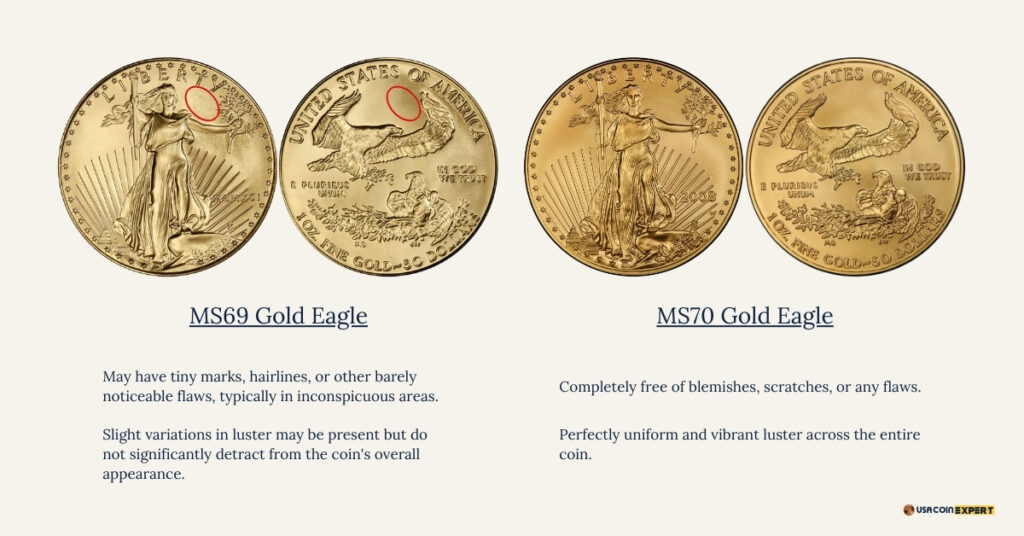
- While MS-69 coins are near-perfect, they may have minute imperfections visible under magnification, such as faint marks or slightly uneven luster. MS-70 coins, on the other hand, are flawless, making the difference between the two grades significant in terms of value and desirability.
10. Inspirational Value
- MS-70 coins inspire admiration for the minting process and the numismatic field, reminding enthusiasts of the beauty and precision that coins can embody.
Why Collectors and Investors Should Care
For collectors, an MS-70 coin is the pinnacle of achievement, adding prestige and value to their collection. For investors, these coins offer a reliable store of value and an opportunity for financial growth. For the numismatic community, MS-70 represents the celebration of perfection and craftsmanship in coinage.
Owning an MS-70 coin is more than possessing a piece of currency; it’s a testament to the art and science of minting, an acknowledgment of history, and a pursuit of excellence that elevates numismatics to an art form.
Factors Influencing the Value of MS-70 Coins: What Drives Their Worth?
Coins graded MS-70 represent the pinnacle of perfection, making their value significantly higher than coins with lower grades. However, the market value of an MS-70 coin is not determined by its grade alone. Several factors combine to influence the worth of these flawless coins, ranging from their rarity to their historical significance.
1. Rarity and Mintage
- Low Mintage Numbers: Coins with limited production runs are often more valuable due to their scarcity. An MS-70 coin from a low-mintage series will command a higher premium.
- Survival Rates: Even if a coin was produced in large quantities, only a small percentage may achieve the MS-70 grade due to the stringent standards, further enhancing its rarity.
2. Metal Composition
- Precious Metals: Coins made from gold, silver, platinum, or palladium often have intrinsic value tied to their metal content. The value of an MS-70 coin increases with the price of the underlying metal.
- Commemorative Metals: Special editions struck in high-quality metals or unique alloys may carry additional premiums due to their distinctiveness.
3. Demand and Popularity
- Collector Interest: Coins featuring popular themes (e.g., historical figures, iconic landmarks, or anniversaries) often attract strong collector interest, driving up value.
- Investment Demand: Investors seeking assets with long-term growth potential often favor MS-70 coins, particularly those made of precious metals or with historical significance.
4. Historical and Cultural Significance
- Commemorative Coins: Coins issued to mark significant events or milestones tend to have higher collectible value, especially when graded MS-70.
- Historical Relevance: Coins from historically important periods or featuring iconic designs can fetch higher premiums.
5. Market Trends
- Economic Conditions: In times of economic uncertainty, demand for MS-70 coins, particularly those made of gold or silver, often rises as people seek safe-haven investments.
- Bullion Market: The value of coins made from precious metals fluctuates with the global market prices for gold, silver, and other metals.
6. Certification and Grading Authority
- Trusted Grading Services: Coins graded by reputable organizations like PCGS or NGC generally have higher value because their certification is trusted in the market.
- Slab Integrity: Coins encapsulated in pristine, tamper-proof slabs with clear certification labels maintain their value better over time.
7. Eye Appeal
- Visual Harmony: Even among MS-70 coins, those with exceptional toning, vibrant luster, or appealing aesthetics may command a premium.
- Unique Features: Certain coins have naturally occurring visual characteristics (e.g., rainbow toning) that make them more desirable to collectors.
8. Year and Series
- Key Dates: Coins from key years, such as the first or last year of a series, tend to be more valuable.
- Popular Series: Coins from widely collected series, such as the American Silver Eagle or Morgan Dollar, often have stronger demand.
9. Special Mint Designations
- Proof Coins (PR-70): Proof coins, specially struck for collectors, often have mirror-like finishes and command higher premiums.
- First Strike/First Day Issue: Coins labeled as “First Strike” or “First Day Issue,” which indicate they were among the earliest produced in a series, are often more valuable.
- Mint Marks: Coins from specific mints (e.g., Carson City for historical U.S. coins) can have additional value.
10. Preservation and Storage
- Pristine Condition: MS-70 coins encapsulated in airtight, tamper-proof holders retain their condition and value over time.
- Proper Storage: Coins stored in optimal conditions, away from humidity and contaminants, are more likely to retain their flawless state, ensuring long-term value.
11. Availability on the Market
- Supply vs. Demand: The value of an MS-70 coin increases when demand outpaces supply. Rare coins or those in high demand among collectors will fetch higher prices.
- Auction Results: Record-breaking sales at auctions can set new benchmarks for the value of similar MS-70 coins.
12. Longevity and Provenance
- Provenance: Coins with a well-documented history or connection to famous collections may have added value.
- Longevity of the Series: Coins from long-running series with consistent collector interest tend to hold their value well over time.
How to Identify and Acquire MS-70 Coins: A Collector’s Guide
Acquiring an MS-70 coin, the pinnacle of coin grading, is a dream for collectors and investors alike. These flawless coins are not only rare but also carry significant value, making them highly sought after. Here’s a step-by-step guide to help you identify and acquire MS-70 coins confidently and effectively.
1. Understanding What MS-70 Means
Before seeking out MS-70 coins, it’s essential to understand their characteristics:
- Flawless Condition: No post-production imperfections visible under 5x magnification.
- Perfect Mint Luster: Full, brilliant shine with no fading or discoloration.
- Sharp Strike: Complete and detailed design with no weak areas.
- Exceptional Eye Appeal: Aesthetic harmony without distracting elements like spots or uneven toning.
2. Look for Certified MS-70 Coins
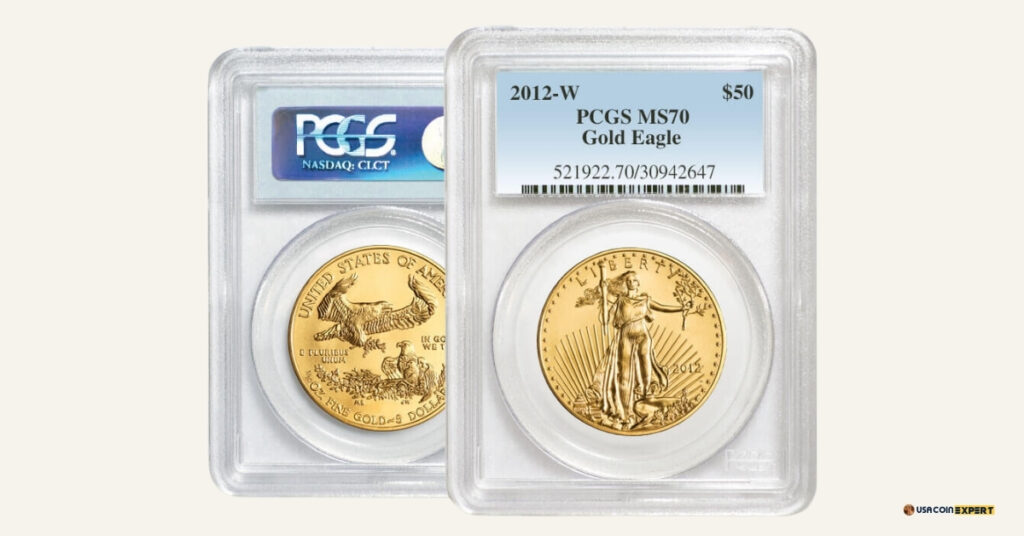
Professional certification is the most reliable way to ensure a coin is genuinely graded MS-70. Trusted grading organizations include:
- PCGS (Professional Coin Grading Service): Known for strict grading standards and global recognition.
- NGC (Numismatic Guaranty Company): Renowned for accuracy and consistency in grading.
- ANACS and ICG: Other reputable grading companies with strong track records.
Certified coins come encapsulated in protective holders, also known as slabs, which:
- Protect the coin from damage or contamination.
- Include a label detailing the grade, certification number, and additional attributes.
3. Identifying MS-70 Coins
When evaluating a coin labeled MS-70, pay attention to:
- Condition of the Slab: Ensure the slab is intact and tamper-free.
- Certification Details: Verify the coin’s grade and authenticity using the grading company’s online database by entering the certification number.
- Visual Inspection: While MS-70 coins are flawless, examine them for exceptional luster, a sharp strike, and overall visual harmony.
4. Where to Acquire MS-70 Coins
Reputable Dealers
- Purchase from established coin dealers with a strong reputation for authenticity and transparency.
- Look for dealers affiliated with professional organizations like the American Numismatic Association (ANA).
Online Marketplaces
- Platforms like eBay, Heritage Auctions, or Stack’s Bowers often list MS-70 coins. Ensure the seller has excellent ratings and offers coins with proper certification.
- Verify images and descriptions match the certification details.
Coin Shows and Conventions
- Attend coin shows to meet dealers in person and inspect MS-70 coins up close.
- Take advantage of the opportunity to negotiate prices and gain insights from experts.
Grading Companies Directly
- PCGS and NGC often sell coins they’ve graded through partnerships with dealers or on their websites.
Mint Distributors
- Purchase newly minted coins directly from official distributors, especially for modern releases likely to achieve MS-70 grades.
5. Factors to Consider When Buying MS-70 Coins
Rarity and Demand
- Research the coin’s mintage numbers and survival rates in MS-70 condition.
- Coins from low-mintage series or key dates are more valuable.
Metal Content
- Coins made of gold, silver, or platinum may hold intrinsic value beyond their numismatic appeal.
Theme and Series
- Popular coin series, such as the American Silver Eagle, often have strong demand in the MS-70 grade.
- Look for commemorative or historically significant coins.
Special Attributes
- Designations like First Strike or Early Release can add value.
- Proof coins with additional finishes, like Deep Cameo, are particularly desirable.
6. How to Avoid Counterfeit or Misrepresented Coins
Verify Certification
- Use the online databases of PCGS, NGC, or other grading companies to confirm the coin’s grade and authenticity.
- Ensure the certification number matches the coin’s label and description.
Avoid Uncertified MS-70 Claims
- Be cautious of sellers claiming a coin is MS-70 without certification from a trusted grading company.
Inspect for Tampering
- Look for signs of tampering with the slab, such as scratches or cracks.
- Ensure the label inside the slab is intact and properly aligned.
7. Pricing and Budgeting
- Research current market values for the specific coin you’re interested in, using tools like price guides or auction records.
- Be prepared to pay a premium for MS-70 coins due to their rarity and demand.
- Set a budget and stick to it, ensuring you’re making an informed investment.
8. Building an MS-70 Collection
Focus on a Theme or Series
- Collect coins from a specific series, such as Morgan Dollars, American Gold Eagles, or World Commemoratives.
- Consider building a set of MS-70 coins from significant years or themes.
Diversify Your Collection
- Include coins made of different metals, designs, or historical periods.
- Balance modern coins with older ones that have achieved MS-70 status.
9. Storing and Preserving MS-70 Coins
- Keep coins in their original certified slabs to maintain their grade and authenticity.
- Store in a climate-controlled environment away from humidity, extreme temperatures, and sunlight.
- Use a safe or deposit box for high-value coins.
10. Seek Expert Guidance
- Join numismatic clubs or online forums to connect with experienced collectors.
- Consult with trusted dealers or numismatic professionals to ensure you’re making informed purchases.
Maintaining an MS-70 Coin: Preserving Perfection
An MS-70 coin is the epitome of numismatic perfection, and maintaining its flawless condition is crucial to preserving its value and beauty. Even minor mishandling or environmental factors can affect the coin’s surface, compromising its grade and marketability. Here’s a comprehensive guide on how to protect and maintain your MS-70 coins.
1. Keep Coins in Their Certified Slabs
- Why It Matters: MS-70 coins are encapsulated in protective slabs by professional grading companies like PCGS and NGC. These slabs shield the coin from physical damage, environmental exposure, and contaminants.
- Do’s:
- Always leave the coin in its original slab.
- Handle the slab carefully to avoid scratches or damage to the protective case.
- Don’ts:
- Never attempt to open or tamper with the slab, as this voids the certification.
2. Store Coins in a Controlled Environment
Proper storage is key to maintaining the pristine condition of MS-70 coins.
Ideal Conditions
- Temperature: Keep coins in a stable, cool environment (60–75°F or 16–24°C).
- Humidity: Maintain low humidity (below 50%) to prevent oxidation and toning.
- Air Quality: Avoid exposure to pollutants, dust, or chemicals.
Storage Tips
- Use a climate-controlled safe or deposit box for high-value coins.
- Avoid storing coins in attics, basements, or garages where temperature and humidity can fluctuate.
3. Avoid Physical Handling
- Why It Matters: Oils and dirt from your fingers can leave residues on the slab, while accidental handling can lead to scratches or smudges.
- Do’s:
- Handle the slab by its edges if necessary.
- Wear cotton or nitrile gloves to prevent transferring oils.
- Don’ts:
- Never touch the coin directly, even if the slab appears loose or damaged.
4. Protect Against Environmental Damage
- Toning and Corrosion: Airborne chemicals, moisture, and extreme temperatures can cause toning or discoloration.
- Storage Materials: Avoid using materials like PVC-based plastics, which can release harmful chemicals over time.
Best Practices
- Store slabs in acid-free or inert material storage boxes.
- Use desiccants (silica gel packs) in storage areas to absorb excess moisture.
5. Cleanliness and Maintenance
- Dust and Dirt: Keep the storage area clean and dust-free to avoid particles scratching the slab.
- Slab Cleaning: Use a soft, lint-free cloth to clean the slab’s surface. Avoid abrasive cleaners or chemicals.
6. Minimize Exposure to Light
- Why It Matters: Prolonged exposure to sunlight or UV light can cause fading or discoloration of the coin’s label or slab.
- Storage Solution: Keep coins in a dark or low-light environment when not being displayed.
7. Transporting MS-70 Coins
When transporting your MS-70 coins, ensure they are well-protected to avoid damage.
Safe Transport Tips
- Use padded cases or coin transport boxes designed to hold slabs securely.
- Avoid stacking slabs loosely, as this can lead to scratches or cracks.
- Handle with extra care during travel to prevent accidental drops.
8. Insure High-Value Coins
- Why It Matters: MS-70 coins, especially those made from precious metals or of historical significance, can have substantial monetary value.
- Steps to Take:
- Obtain an appraisal from a certified numismatist.
- Purchase insurance tailored for collectibles or coins.
- Keep a detailed inventory with photos and certification details for each coin.
9. Monitor and Inspect Regularly
- Routine Checks: Periodically inspect your MS-70 coins and their slabs for signs of damage or deterioration.
- Address Issues Quickly:
- If you notice cracks in the slab, consider having the coin re-encapsulated by the original grading service.
- Keep an eye on environmental conditions to ensure they remain stable.
10. Avoid Common Mistakes
Mistake 1: Improper Storage
- Using cheap or non-specialized storage materials can expose coins to harmful chemicals or moisture.
Mistake 2: Overhandling
- Repeatedly handling or moving slabs increases the risk of accidental damage.
Mistake 3: Ignoring Environmental Factors
- Failure to monitor humidity or temperature can lead to irreversible damage, such as toning or corrosion.
Summary of Best Practices for Maintaining MS-70 Coins
| Aspect | Best Practices |
|---|---|
| Encapsulation | Keep coins in their certified slabs to prevent damage and contamination. |
| Storage Environment | Use climate-controlled storage with low humidity and stable temperatures. |
| Handling | Minimize handling and always wear gloves when necessary. |
| Cleaning | Clean the slab gently, avoiding harsh chemicals or abrasives. |
| Transport | Use padded cases and handle slabs with care during travel. |
| Insurance | Insure valuable coins and maintain an inventory with certification details. |
| Inspection | Regularly check for damage or environmental risks. |
Conclusion: The Timeless Allure of MS-70 Coins
An MS-70 coin is not just a perfect piece of currency—it’s a reflection of skill, precision, and history in coin collecting. These coins are the highest standard of minting perfection, making them highly valuable for collectors and a reliable investment for enthusiasts.
Owning and caring for an MS-70 coin takes knowledge and attention. From understanding how they’re graded to buying from trusted sources and keeping them in perfect condition, every step helps maintain their unique value. Whether you’re new to collecting or experienced, the journey to owning these coins is truly rewarding.
MS-70 coins are more than collectibles—they represent excellence in the world of coin collecting. By protecting and treasuring these rare pieces, you preserve not just their value, but also a legacy of craftsmanship and history.
Frequently Asked Questions About MS-70 Coins
1. What does MS-70 mean?
MS-70 is the highest grade on the Sheldon Coin Grading Scale, signifying a coin in perfect condition. It indicates that the coin has no visible flaws, even under 5x magnification, and exhibits sharp details, perfect luster, and exceptional eye appeal.
2. How is an MS-70 coin different from an MS-69 coin?
While MS-69 coins are near-perfect, they may have very minor imperfections visible under magnification, such as a tiny mark or slight unevenness in the strike. MS-70 coins are flawless, with no post-production defects or blemishes.
3. Are MS-70 coins rare?
Yes, MS-70 coins are rare. Even in modern minting, achieving a perfect grade is challenging due to minor flaws in the minting or handling process. Older coins graded MS-70 are even rarer due to age-related wear and historical minting imperfections.
4. What types of coins can be graded MS-70?
Both circulating and non-circulating coins, such as bullion coins, commemoratives, and proof coins, can achieve the MS-70 grade. However, non-circulating coins, especially those intended for collectors, are more likely to meet the stringent standards.
5. How can I verify that a coin is truly MS-70?
Always purchase MS-70 coins certified by reputable grading services such as:
PCGS (Professional Coin Grading Service)
NGC (Numismatic Guaranty Company)
6. What factors determine the value of an MS-70 coin?
The value of an MS-70 coin depends on:
Rarity and mintage numbers.
Metal content (e.g., gold, silver, platinum).
Historical or cultural significance.
Market demand among collectors and investors.
Special attributes like “First Strike” or “Early Release” designations.
7. Can older coins achieve an MS-70 grade?
It is possible but extremely rare. Older coins face challenges like age-related wear, oxidation, and less precise minting processes. Most older coins in perfect condition are graded MS-68 or MS-69.
8. Where can I buy MS-70 coins?
You can purchase MS-70 coins from:
Reputable coin dealers or grading services.
Online marketplaces (e.g., eBay, Heritage Auctions).
Coin shows and conventions.
Authorized distributors of mints like the U.S. Mint.
9. How should I store an MS-70 coin?
Store your MS-70 coins in their original certified slabs in a climate-controlled environment. Avoid high humidity, direct sunlight, and extreme temperatures. Use a safe or deposit box for added security.
10. Can MS-70 coins increase in value over time?
Yes, MS-70 coins often appreciate in value, especially if they are rare, made of precious metals, or from popular series. However, their value also depends on market trends and collector demand.
11. Is it worth paying a premium for MS-70 coins?
If you value owning the best quality and rarity, MS-70 coins are worth the premium. They are highly sought after by collectors and investors and often command higher resale values due to their flawless condition.
12. What is the difference between MS-70 and Proof 70 (PR-70)?
MS-70 (Mint State 70): Refers to uncirculated coins with a standard matte or satin finish.
PR-70 (Proof 70): Refers to proof coins, which are specially struck with mirror-like finishes and sharp details for collectors.
Both grades indicate perfection but apply to different types of coins.
13. Can I grade a coin MS-70 myself?
Professional coin grading requires expertise and access to advanced tools. To ensure credibility and maintain value, have your coin graded by trusted grading companies like PCGS or NGC.
14. What should I avoid to protect my MS-70 coin?
Do not remove the coin from its certified slab.
Avoid exposure to humidity, pollutants, or sunlight.
Refrain from handling the slab without gloves.
Do not stack slabs loosely to prevent scratches.
15. Are MS-70 coins a good investment?
Yes, MS-70 coins are considered a good investment due to their rarity, condition, and demand. They are particularly appealing for those looking to invest in precious metals with added numismatic value.



